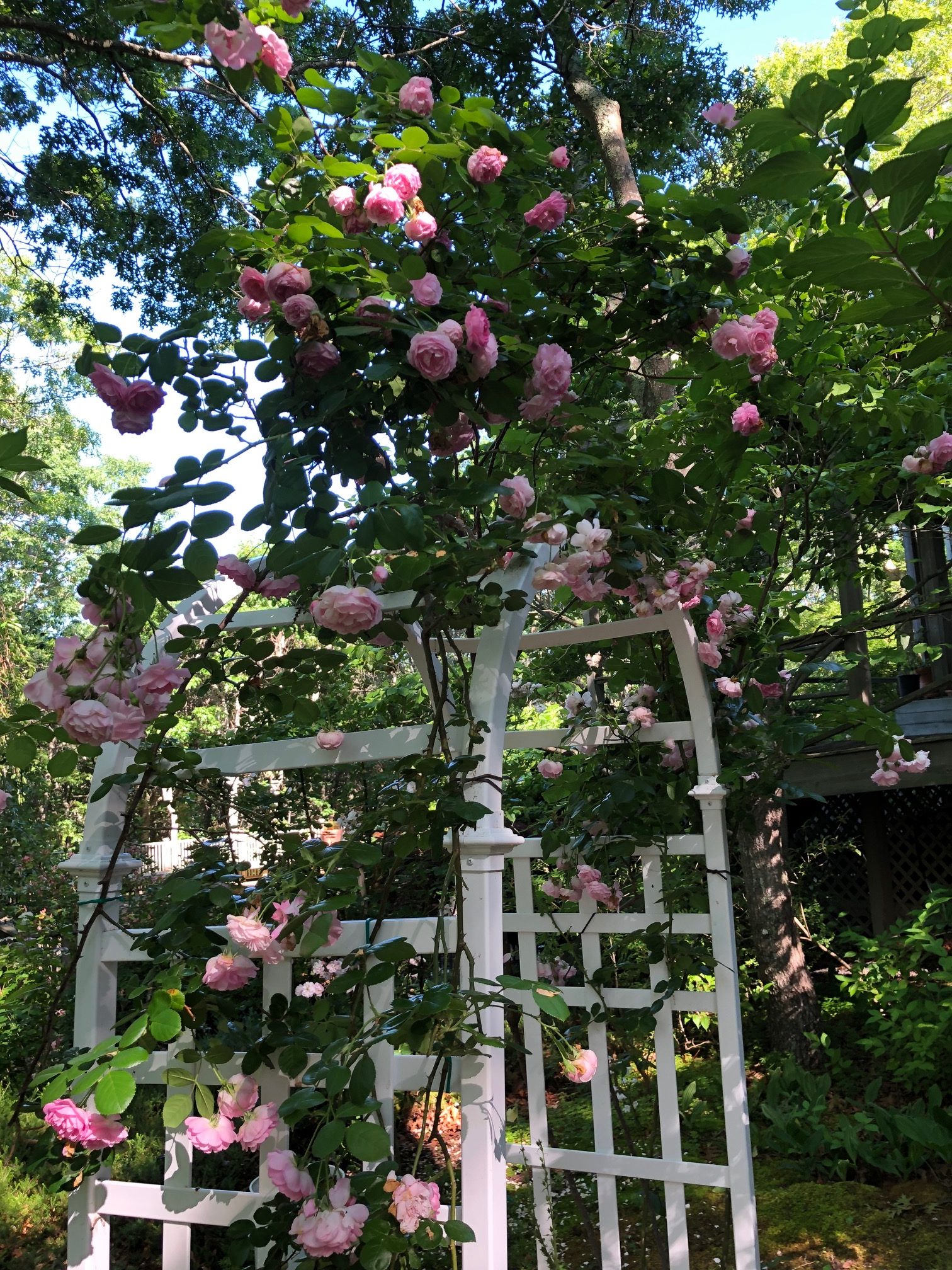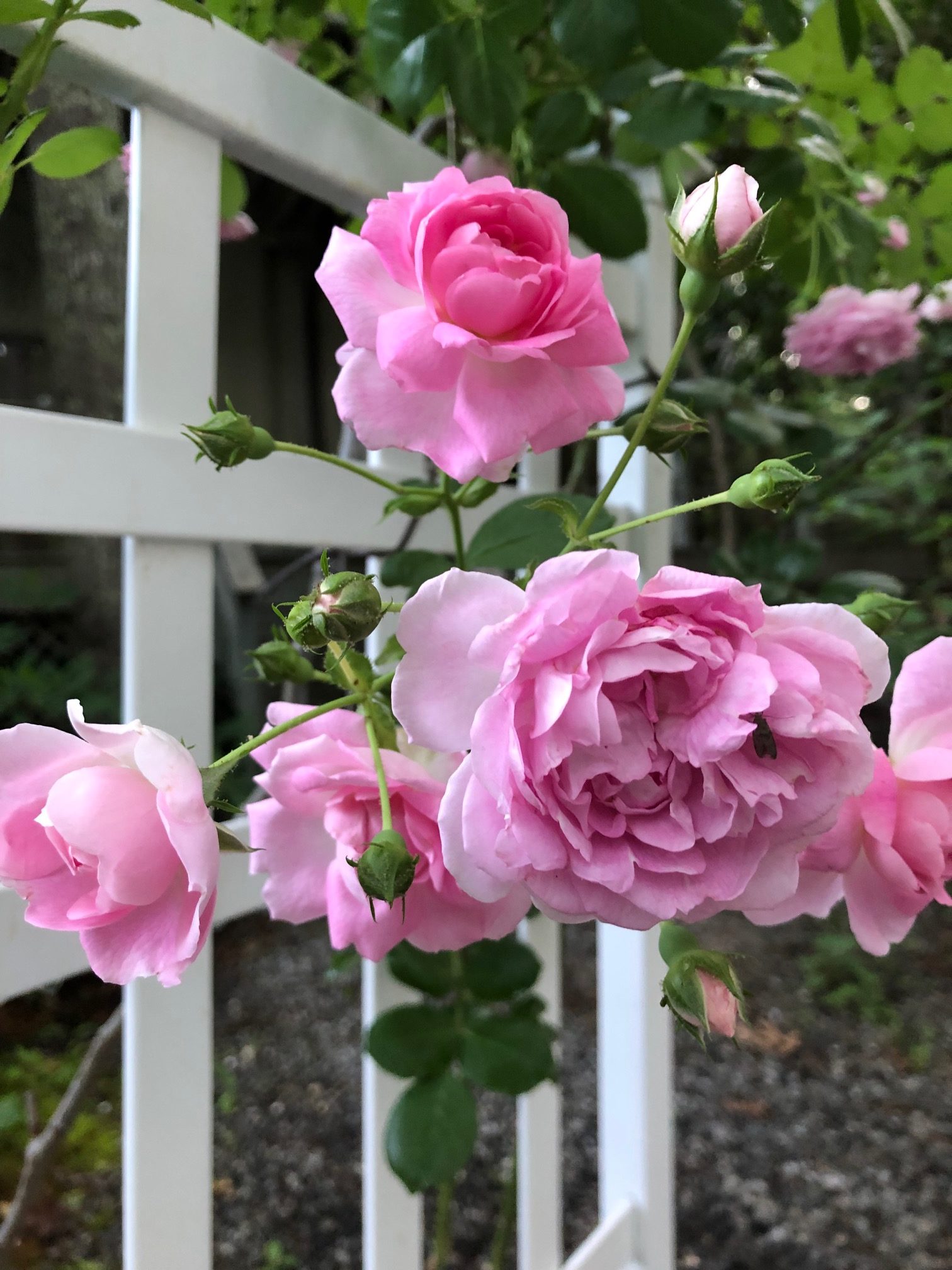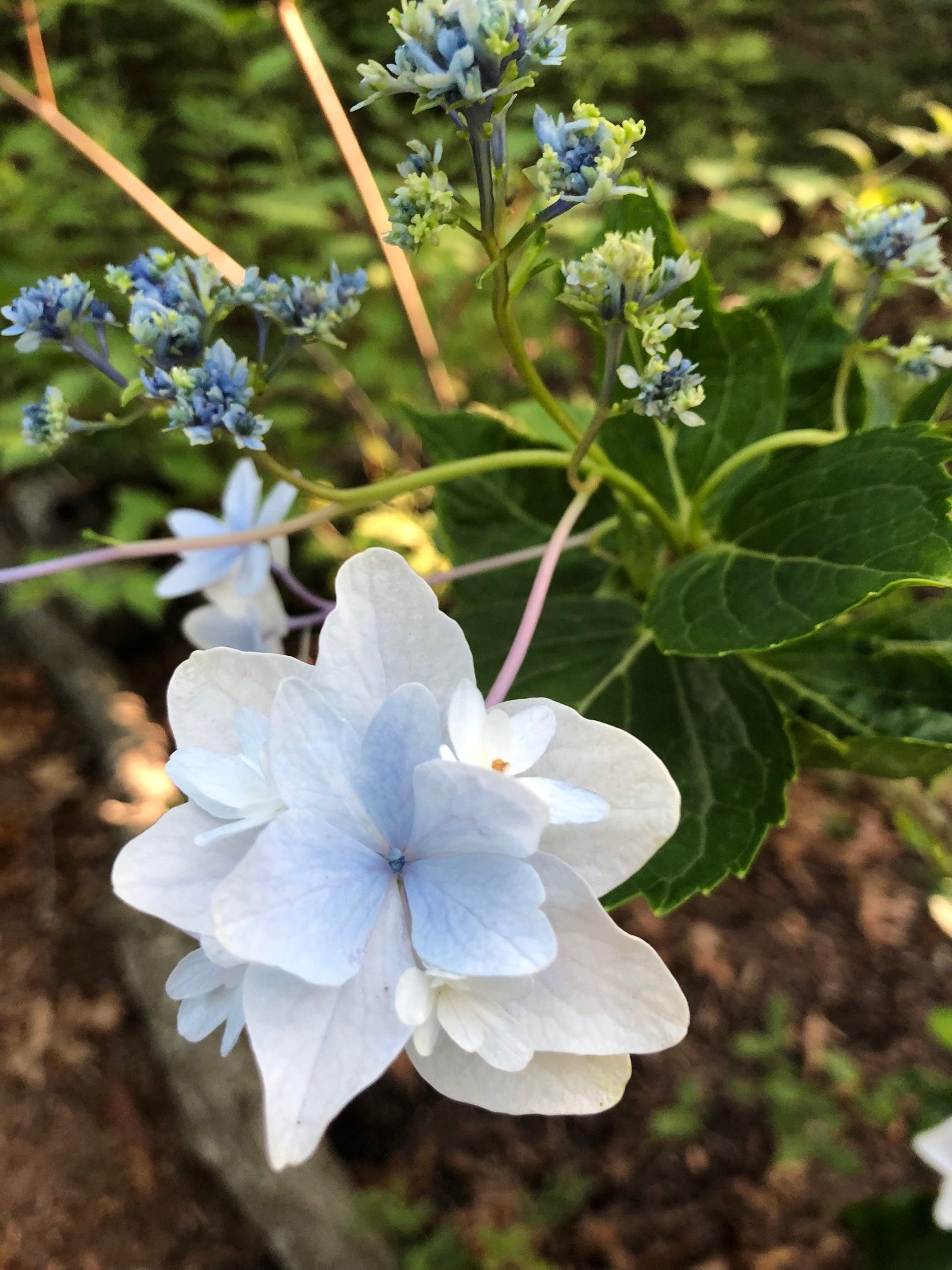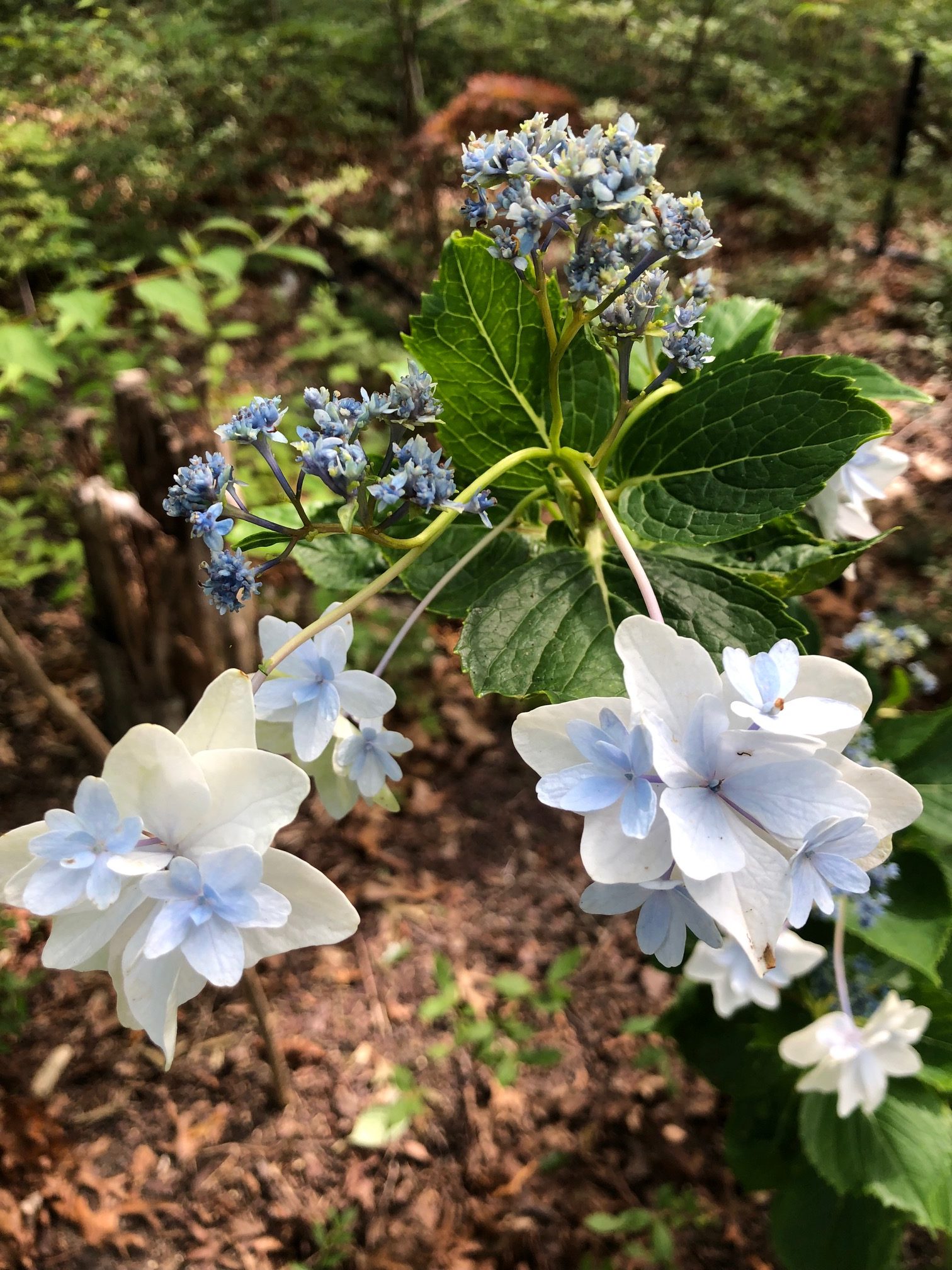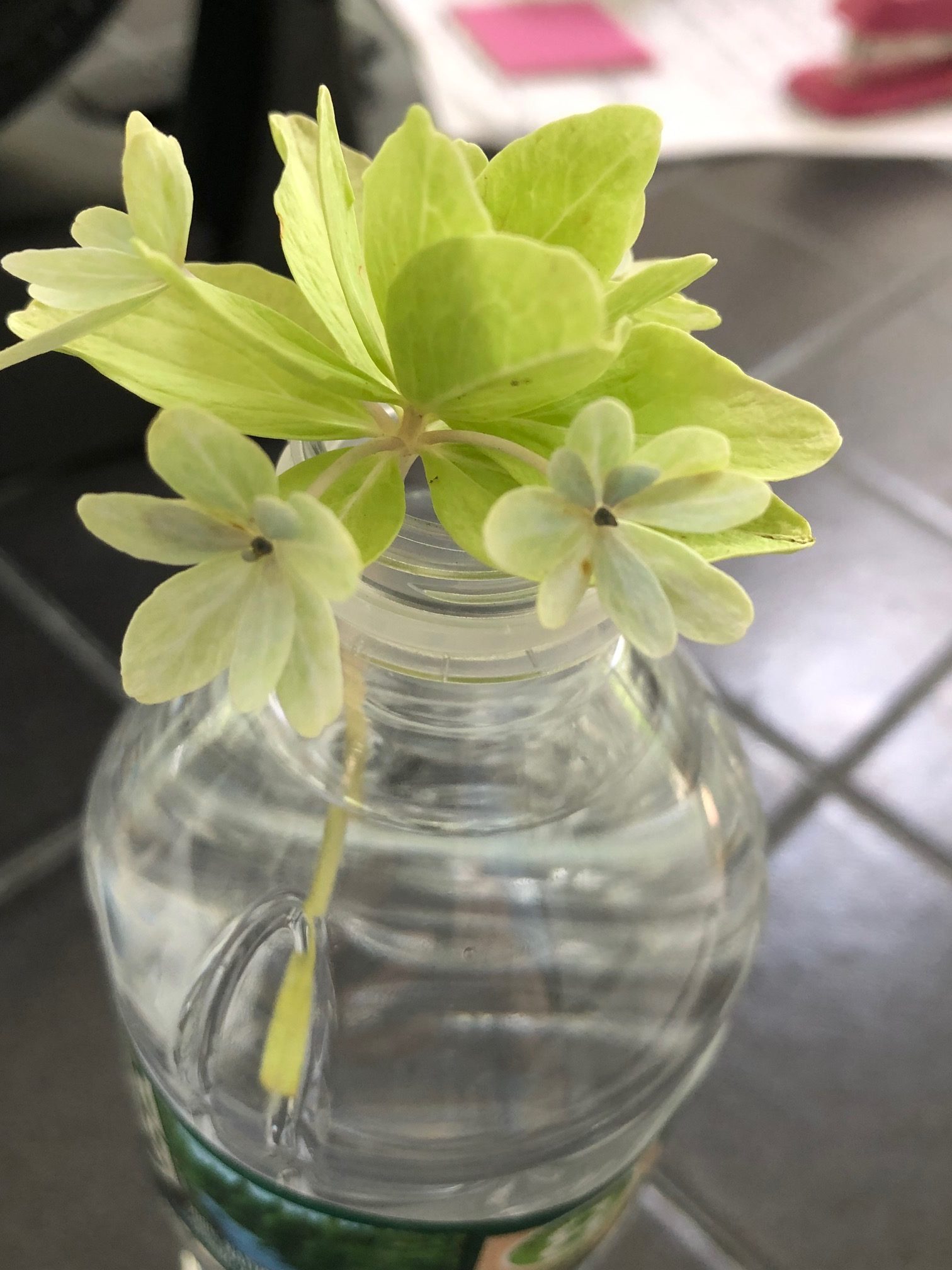Rosa ‘Jasmina’ Z 5-9
My weather-worn, broken, metal rose arch finally gave up the ghost. In early April I detached its occupant Rosa ‘Jasmina’ and mail-ordered a new, weather-proof, vinyl replacement. By the time the arch arrived and was assembled, I was so overwhelmed with Spring cleanup I simply threw Jasmina over the new support — without proper attachment, pruning and feeding. Moreover, because the new arch was smaller than the old, which necessitated a change in garden placement, the rose stems had to change direction — north to south instead of south to north. I wasn’t sure Jasmina would survive this unfortunate treatment.
But survive it did and then some, filling the summer air with delicious perfume. I am delighted with the rose’s fortitude and untamed exuberance. Photos below.
Jasmina is an award-winning Kordes bred climbing rose. The Kordes Nursery was founded in Germany in 1887 and since 1990 grows its roses without fungicides. All Kordes roses undergo years of trial evaluation for disease resistance, color, form and fragrance before they are introduced into commerce. Jasmina is beautiful, very healthy, fragrant, vigorous — and forgiving. It thrives in well-draining, moist, organic-rich soil.
Hydrangea macrophylla ‘Sumida no Hanabi’ aka H.m. ‘Fugi Waterfall’ Z 6-9
In recent years, there has been a staggering number of sensational new Hydrangea introductions. But like the nursery rhyme “make new friends but keep the old, one is silver and the other is gold,” I want to celebrate a golden oldie — a Japanese native Hydrangea I’ve grown and treasured for over a decade.
H.m. ‘Sumida no Hanabi’ is a captivating, award-winning gem of a plant. It possesses attractive, healthy, dark green foliage, but it’s the charming waterfall of double lace-cap florets, dancing from long pedicels, that make this hydrangea special. In acid soil the white florets sport blue centers and the small clusters of fertile flowers — surrounded by the elegant, dancing lace-caps — are also blue. The florets will eventually age to creamy mint green. Photos below.
Hanabi flourishes in my acidic, well-draining, moist, organically rich soil, in shade. As with other macrophylla, the shrub blooms on old growth, so prune after flowering.
News Alert: Naming Names
The Governing Board of the Entomological Society of America has changed the common name of the Lymantria dispar moth from Gypsy moth to Spongy moth. They concluded that the word gypsy was an offensive slur of the Romani people.
I think anyone would resent being closely tied by name to these vile, foliage-chomping moths. They have laid waste to — and continue to kill — millions of hardwood trees, especially our beloved native Oaks.
The moths are not native to the United States but were brought here in 1869 by a Frenchman, Etienne Leopold Trouvelot. He was hoping to make a fortune in the U.S. with a misguided plan to breed silkworms. When the moths escaped captivity and set about the rapid destruction of countless acres of our hardwood forests and home garden landscapes, Trouvelot hightailed it back to France.
Surely, wouldn’t Justice be better served if the moth’s common name were Trouvelot? Just sayin’.
Justice was served in California: A court recently ruled that four species of bumblebees could be protected under the umbrella of the California Endangered Species Act because the bees fell within the statute’s legal definition of “Fish”. A surprising decision, yes. An important win for our pollinators, absolutely. (And I’m sure that for two of the species, Crotch bumblebee and Suckley’s Cuckoo bumblebee, a name change was welcome.)
